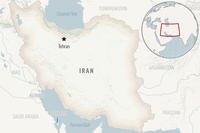WASHINGTON – Senior Chief Gunner's Mate Robert Hyatt recalls Nov. 30, 1988, as the day he got his Enlisted Surface Warfare Specialist pin. More than 26 years later, after nomination from last year’s chief petty officer selectees, he realizes how significant that day has turned out to be.
Last month in Washington, D.C., Hyatt, a sailor from Navy Expeditionary Combat Command, was presented with the "Old Tar" award by the Surface Navy Association.
"I was quite surprised that I was chosen as the next Old Tar," Hyatt said. "It definitely made me think about my years of service and all of the things I've accomplished."
The Old Tar term comes from the early days of the Navy when sailors often boarded enemy ships in battle and engaged in hand-to-hand combat. Beforehand, they would dip the knot of their long hair in tar, which would then harden and protect their necks from blows from behind. Some sailors soon became known as "tars.” An "Old Tar" was one who was honored and respected for his knowledge, wisdom and long experience at sea.
Today, the Old Tar is given to the active-duty enlisted surface warfare specialist with the earliest date of qualification, as received by the SNA before the announced closing date for nominations.
A Veteran Surface Sailor
Hyatt, a native of Springfield, Ohio, remembers the day he officially became a surface sailor.
"When I got my ESWS, I was a 2nd class and the program had only been around for nine years, so not a lot of sailors had the qualification," Hyatt said. "Out of 175 people on board USS W.S. Sims, only 16 sailors were ESWS qualified and that included E-9 and below."
Over the years the ESWS program has evolved, and Hyatt recalls how very different it was in 1988.
"Unlike now, where many ships conduct ESWS training during working hours, all work and studying had to be completed during a sailor's free time," Hyatt said. "Sailors had to survive two preliminary boards and a 100-question written test. We then had to pass an oral board chaired by the executive officer or commanding officer of the ship."
Hyatt said that it was a challenge to achieve the milestone due to the requirements placed on the program.
"It wasn't a requirement -- more like a specialty," Hyatt said. "The ESWS sailors had their own duty section. If the ship had to get underway in an emergency, they would call the ESWS duty section first to get it underway."
Pride and Tradition
And because it was such a new program, Hyatt felt it was an honor to be in such an elite group.
"It's about pride … it was about carrying on the tradition," Hyatt said. "It made you the best of the best on the ship. It was an honor to be a part of such an important group because ESWS is steeped in Navy tradition, and with some Navy traditions going away, this is one that I don't want to see fade."
Hyatt said his love for Navy traditions actually led to his submission for the Old Tar.
"About six years ago I was running a chief's season, and I tasked the selectees with finding out when each chief got their ESWS, what the Old Tar is and then give a brief on it," Hyatt said. "I thought it was a great way for the selectees to get out and meet the Chief's Mess."
Over the years, that tradition has continued, which led to Hyatt's nomination by the Fiscal Year 2014 Joint Expeditionary Base Little Creek-Fort Story Chief Selectees. When he heard about the nomination, he was humbled that he met all the criteria.
"I never imagined that a simple task I've given the selectees over the years would lead to my nomination for one of the greatest milestones of my career," Hyatt said.
On Feb. 1, Hyatt officially received the title of the Navy's Old Tar from retired Master Chief Fire Controlman Thomas Ward.




























